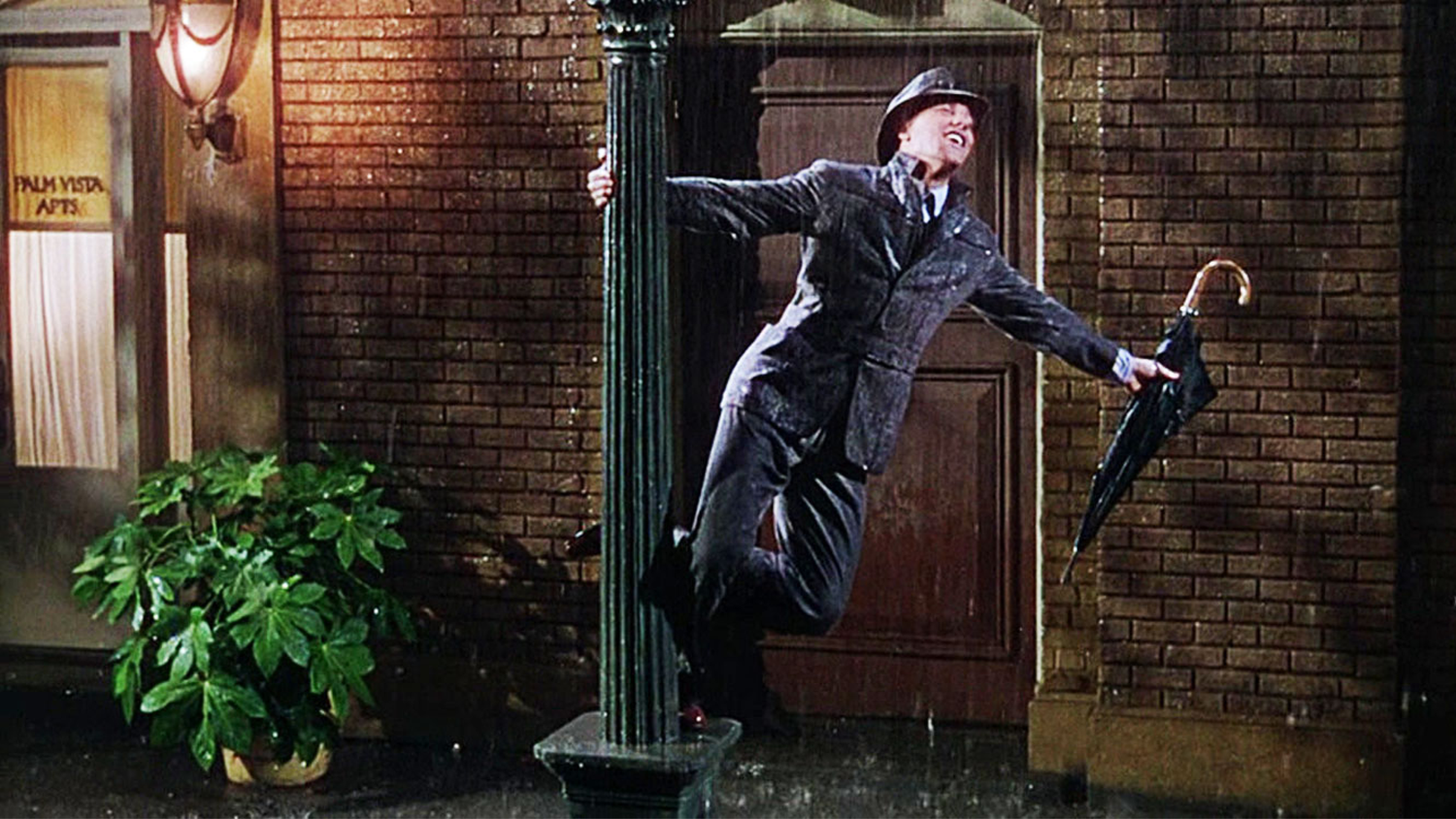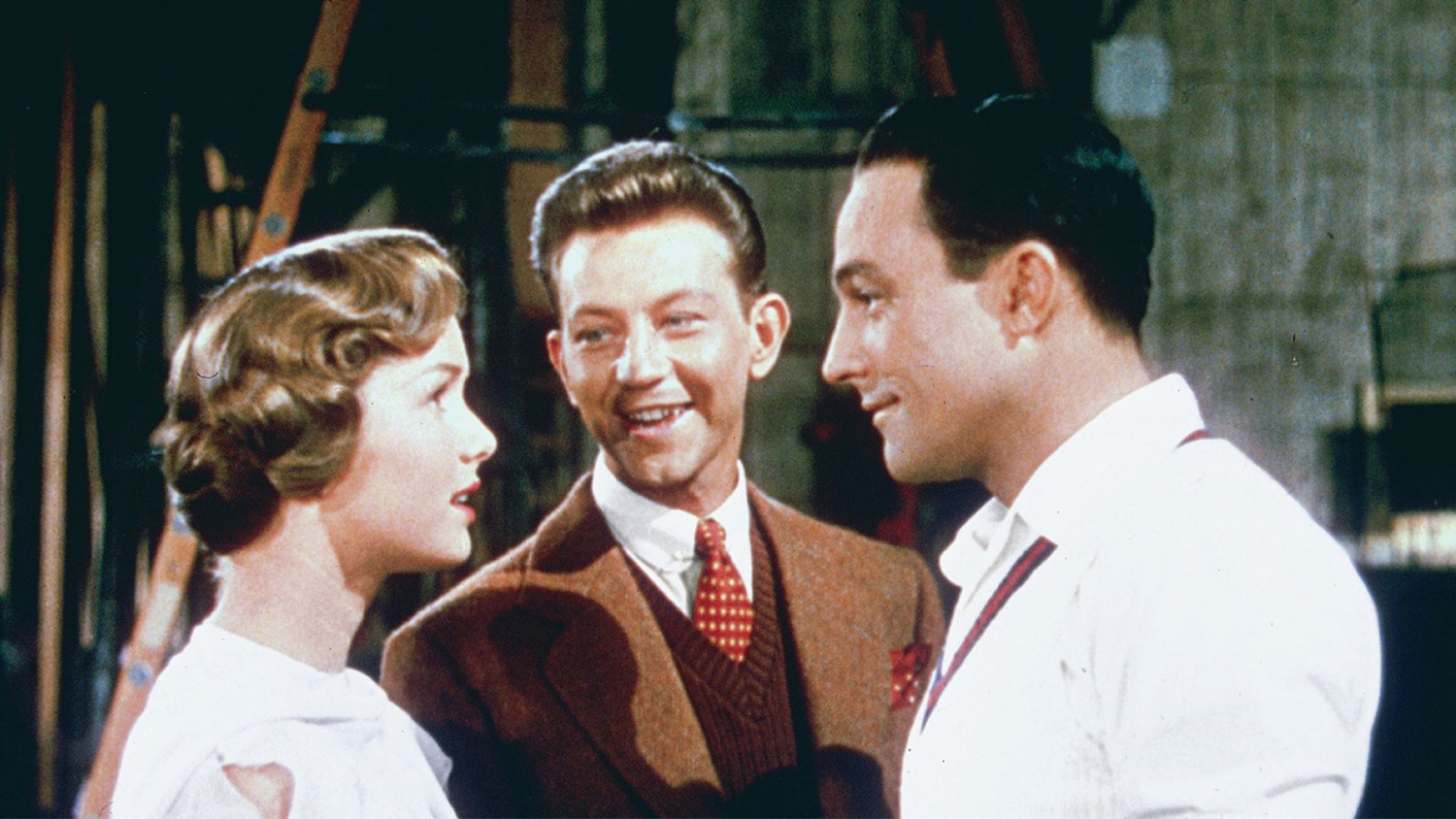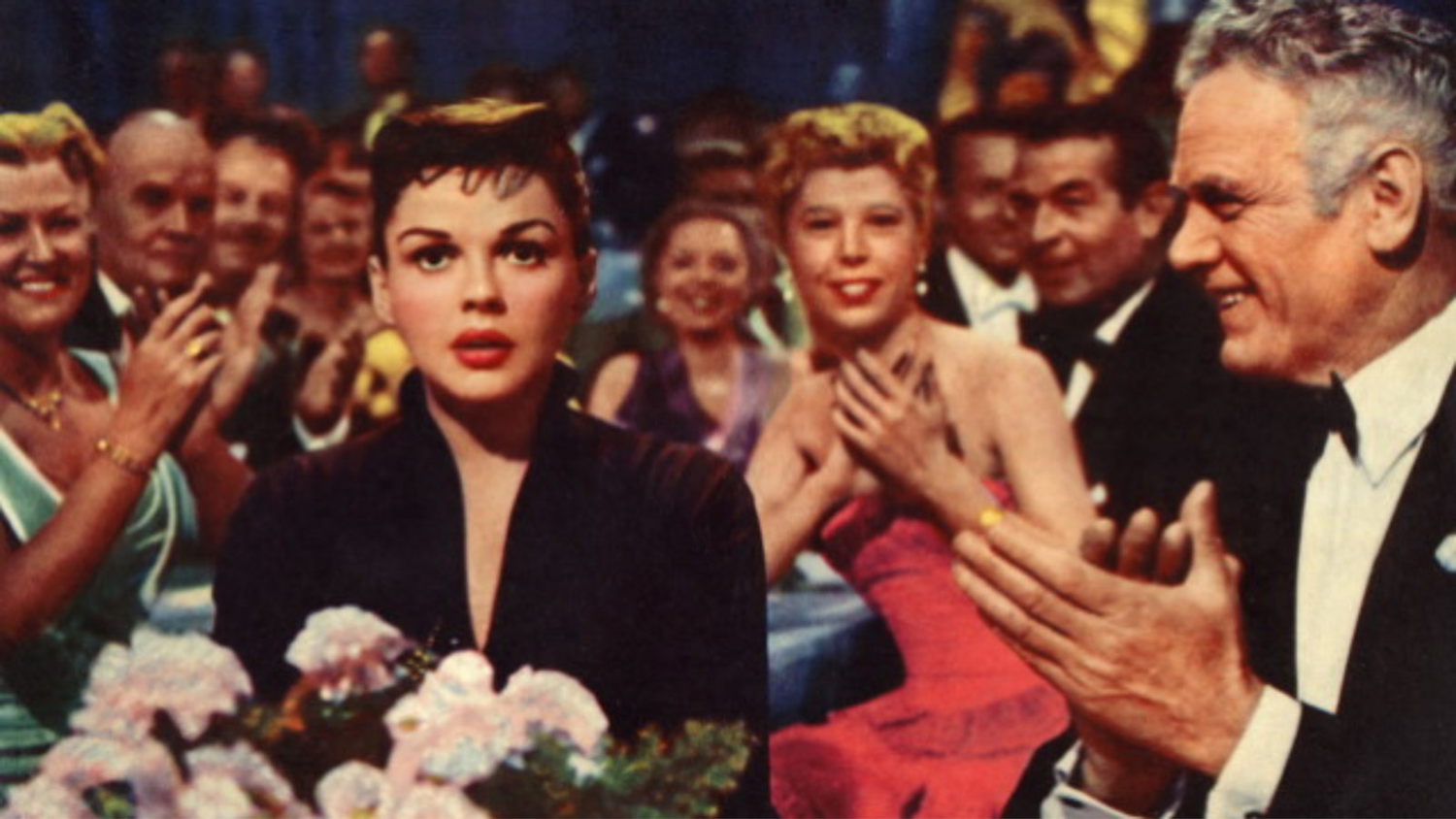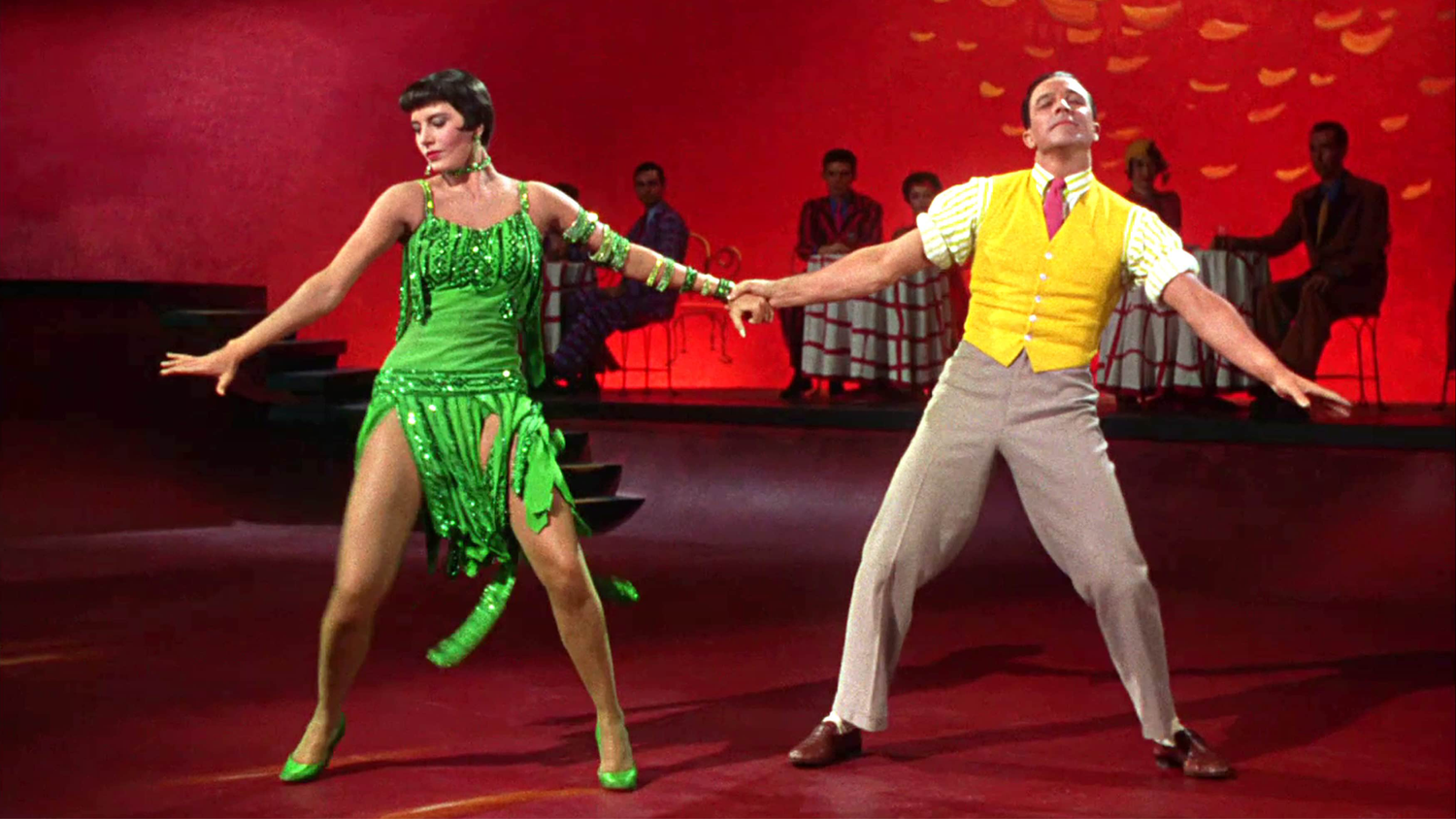Singin’ under the Stars: two clashing, classic musicals chart the same story of Hollywood’s imagined and real transitions

When I was a kid my favourite movie was Singin’ in the Rain (1952). The MGM musical - which Revue Cinema screens on June 13th to celebrate its 70th anniversary - mythologizes Hollywood’s bumpy transition to ‘talking pictures’ with catchy songs, energetic dancing and a brash primary colour palette which was a precursor to Pop Art. It was a rainy day favourite to pop into the VCR, guaranteed to brighten up a blah afternoon. “What a glor-i-ous feeling,” as the title song proclaims. “I’m happy again!”
Then I got older, went to university, and got my heart broken a couple of times. I also read Judy Garland’s biography which prepared me for her version of A Star is Born (1954) - which in turn is screening at Paradise Theatre on June 20th. The book helped me understand the complicated backstory of Warner Brothers’ musical epic, and how it was Garland’s ambitious and failed comeback vehicle that included themes of addiction and self-destruction all too familiar to Judy herself. This backstory led me to embrace the film as a new favourite, despite its many flaws and inherent sexism: It was a darker, more cynical musical for a darker, more cynical me.
Eventually, despite their vastly different tones, the many similarities shared by these movies dawned on me. Although I’ve rarely seen them mentioned together, commonalities abound, from points and themes to visual motifs and musical sequences, some of which seem directly lifted by A Star is Born from the earlier film.
The message of both films can be summed up as “there’s only room for so many stars in the heavens.” Or, to put it bluntly, in Hollywood no one is irreplaceable. Once your star starts to dim, the Dream Factory will drop you out as quickly as it lifted you up. Like the twinned masks that represent the two modes of theatre, Singin’ in the Rain plays the story for laughs while A Star is Born reveals it as tragedy.
By the early 1950s, the major Hollywood studios were feeling introspective about their industry. Singin’ in the Rain and A Star is Born are just two examples of films from the period, such as Billy Wilder’s Sunset Boulevard (1950) and Vincent Minnelli’s The Bad and the Beautiful (1952), that turned the camera inwards toward movie making and the uglier side of stardom. Threatened by the arrival of television, post-WWII changes to audience behaviour and tastes, and the forced break up of their monopolies by the Supreme Court, the studios faced shrinking box offices and an unclear future. McCarthyism was also spreading like cancer, threatening the careers of many in the industry, and spreading fear and paranoia among left-wingers like Gene Kelly.
Not that any of these anxieties appear in Singin’ in the Rain, at least on the surface. Despite the soggy title, the sun always shines at Monumental Studios, the fictional stand-in for MGM where much of the action takes place.

It’s 1927 and the romantic duo of Don Lockwood (Kelly) and Lina Lamont (Jean Hagen) are at the top of their game, having just opened another costume drama, The Royal Rascal. But change is on the horizon, first given voice by Kathy Selden (Debbie Reynolds) - an aspiring performer who, rather than “fall for Don’s line” openly mocks the showy phoniness of silent movie acting - then by the arrival of The Jazz Singer (1927), the first sound movie that brought on a revolution in movie-making (which did happen quickly if not, as the movie suggests, virtually overnight).
Switching gears, Monumental Pictures rebrands Lockwood and Lamont as talking stars, but they’re held back by technical limitations (gigantic stone age microphones hidden in costumes or props) and Lina’s screeching voice, a plot point inspired by the actual phenomenon of stars whose careers were cut short after the invention of sound revealed their tongues to be weak, grating, or regionally accented. It’s the reason the next generation of stars in the early 1930s spoke with the highly enunciated Mid-Atlantic tones of Cary Grant, Katherine Hepburn, and Joan Crawford - who survived the advent of sound by spending the rest of her career perfecting her diction to rid it of any trace of her Texan twang.
Rather than work hard at her own voice lessons, Lina decides it’s simpler to steal Kathy’s voice and have the up-and-coming actress speak and sing for her on screen in all her future movies. I love the implication that the invention of sound led directly to the invention of dubbing. By the finale, Don embraces his origins as a Vaudevillian singer and dancer, and not only rescues Kathy from Lina’s clutches, but resurrects his own career and the fortunes of Monumental Pictures by bringing everyone’s authentic talents together in an imaginative and innovative new musical. The film concludes with the happy endings of Don, Kathy, and the studio visually brought together on the billboard for their next picture, symbolically entwining all three like a stand-in for a wedding finale.
I agree with Stevan Cohan’s interpretation in his book Incongruous Entertainment: Camp, Cultural Value, and the MGM Musical that this ending was the studio’s rather insecure way of reminding audiences of the kind of big Technicolor entertainment they couldn’t get from the little flickering grey box of TV.

The industry anxieties simmering beneath the surface of Singin’ in the Rain are brought to the fore in A Star is Born, set when it was made in the early 1950s, the sunset years of the studio system.
Norman Maine (played by James Mason) is an established movie star and as soon as he’s on screen we learn he is an alcoholic who seems intent on sinking his own career. Arriving drunk at a charity gala, he bounds onto the stage, interrupting a performance by Esther Blodgett (Judy Garland). But Esther is quick on her feet and incorporates Norman into the number, helping him almost save face. Norman later seeks Esther out at a bar after last call and discovers the full depth of her talent as she belts out the torch song “The Man That Got Away” for nobody but herself and the boys in the band. His life has a new mission: to make Esther a star.
Norman gets Esther a camera test at his studio, but just as importantly, he encourages her to believe in her talent and raise her career aspirations. “Don’t settle for the little dream,” he says in a speech that often runs through my head when I’m contemplating big life decisions. “Go on for the big one.”
After the premiere of her first film, Esther’s career skyrockets and she and Norman fall in love. But Norman’s substance abuse continues and, as the studio keeps telling him, the old days when they could afford delays and canceled shot days, as well as covering up stars’ indiscretions from the tabloids, are long over. As the studio’s press agent dictates the media release announcing the cancellation of Norman’s contract, he watches out the window as the faded billboard for Norman’s last picture is taken down and replaced by Esther’s upcoming musical vehicle, ironically titled Happiness Ahead. Whereas in Singin’ in the Rain a billboard represented the unification of the couple and their shared professional success, in A Star is Born they signify the opposite - split fortunes that will ultimately divide.
A Star is Born goes on at not-exactly-the-quickest pace from there with a foreboding sense that it’s heading nowhere happy. The original cut clocks in at three hours. Director George Cuckor had never made a musical before and didn’t consider the need to accommodate the songs and dances by trimming dialogue. However, he was still a great director and the scenes in which he encouraged Judy to dig into her personal experience with addiction and mental health to tap into Esther’s emotional breakdowns are riveting. By the bleak finale it’s clear why this film has been called Judy’s first musical without an MGM happy ending.

Despite their stark differences, should you catch both screenings in succession you’ll notice a number of shared traits. Both films open with Hollywood red carpet events and a gossip columnist gently needling the arriving stars. In A Star is Born, the squeaky-voiced Lola Lavery (played by Lucy Marlow) seems based on Jean Hagen’s own Lina Lamont in Singin’ In The Rain. She’s introduced early in the film as Norman’s casual girlfriend before being unceremoniously dropped after only a couple of scenes (dropped by the movie, but presuming by Norman as well).
Both films feature mid-movie ‘musical ballet’ sequences in which the contextual plot is basically forgotten in favour of immersing the viewer in a stand-alone micro-production. These and other musicals at the time were inspired by the trend started with American in Paris (1951) in which director Vincent Minnelli dispersed all dialogue for the finale and indulged in a fantasy sequence (art directed up the wazoo) to accompany George Gershwin’s musical suite.
In Singin’ in the Rain, it’s the ‘Broadway Melody’ number, ostensibly a visualized imagining of the new musical idea Don pitches to the studio, but really an excuse to do some sexy dancing with Cyd Charisse. In A Star is Born, it’s the ‘Born In A Trunk’ medley, a preview of Esther’s first film that lights the fuse of her stardom.
Both these musical sequences tell rags-to-riches showbiz stories and have similar plot points. Both feature the protagonist auditioning for a succession of agents (and getting repeatedly rejected), and both shorthand the rise to stardom through the recurrence of a single-stage performance, repeated thrice, but each time in a more upscale setting. The similarities between ‘Broadway Melody’ and ‘Born In A Trunk’ heavily suggest that, when it came to concocting a musical number to explain Esther’s overnight success, the makers of A Star is Born cast their eyes back to the success of Singin’ in the Rain.

Lastly, both films come full circle, with settings for the finales that call back to the opening - for Singin’ in the Rain, a movie premiere and A Star is Born, another charity gala. The finales bookend the plots in a way that suggests that, despite all the changes the characters have gone through, the Hollywood machine marches on.
But the studio system as it existed in the early 1950s didn’t go on, and by the end of that decade the party was over. Both movies also happen to represent the last pinnacles of their stars’ careers. While Kelly made a handful more musicals for MGM, none reached the heights of Singin’ in the Rain, and he eventually decamped to Europe to make more artistically-inclined films. Although celebrated by the critics on immediate release, Warner Brother’s drastically cut A Star is Born down for length, making the plot at times incomprehensible. Despite being considered a heavy favourite, Judy failed to win an Oscar at that year’s Academy Awards, and although she made a few more movies before her death, she mostly returned to connecting with her audience through live concerts.
Taken together, Singin’ in the Rain and A Star is Born reflect two diverging takes on Hollywood grappling with changing times and the careers that get left behind. Singing’ in the Rain wraps it in Gene Kelly’s smile while A Star is Born asks us to face Judy Garland’s tears. Is it any wonder that, of the two, Singin’ in the Rain is the more beloved, frequently held up by audiences, critics and the movie industry itself as one of the best movie musicals, while A Star is Born (despite the multiple remakes) is primarily watched by genre buffs and Judy fans?
Hollywood may change but the desire for happy endings endures.
Max Mosher is a writer and communications specialist. He is a Senior Staff Writer and Old Hollywood Correspondent for The Town. You can follow him and his writing on Instagram.





